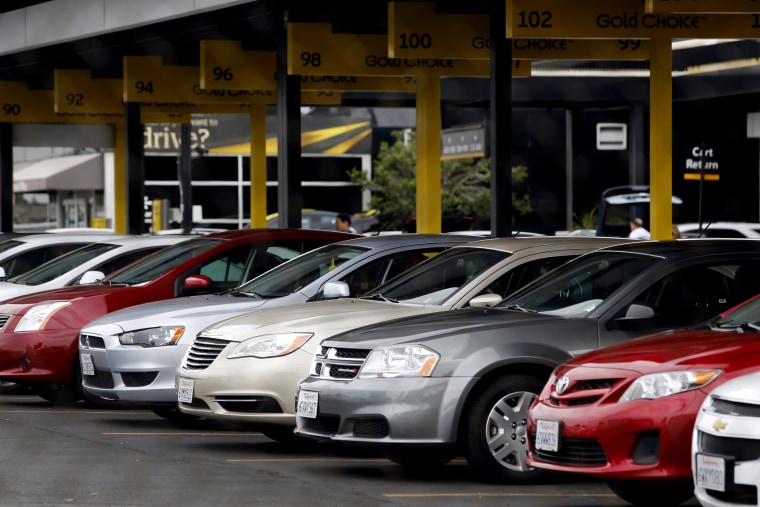Excellent News To Selecting A Car Rental Website
Excellent News To Selecting A Car Rental Website
Blog Article
How Do You Review The Insurance Coverage Offered By The Rental Firm When Renting A Car?
The review of the coverage of insurance and choices provided by the rental company is essential to ensure that you have adequate protection and avoid any unnecessary costs. Learn how to efficiently look over insurance coverage prior to renting a car. Understand Basic Coverage. Most rental firms offer basic liability coverage that covers damage to third-party property and bodily injury in case of an accident where you are at fault. The insurance is subject to limits and deductibles.
Renters can offer a range of optional insurance packages that offer extra security. Some of the most common kinds of coverages are Collision Damage Waiver and Loss Damage Waiver. They can help to reduce or completely eliminate your financial liability if you damage the vehicle you are renting.
Examine the coverage and deductibles. Check the limits of coverage, deductibles, and other terms related to each option of insurance. Calculate the maximum insurance payout for the event of damage. Also, determine the deductible you must pay prior to the time your insurance coverage starts to take effect.
Check your Personal Insurance Policies: Check if your personal insurance policy for autos or your credit card has coverage for rental cars. If you make use of your credit card to pay for the car rental, certain cards also provide insurance coverage. The coverage of your personal auto insurance policy could be extended to rental vehicles. But the extent of this coverage will differ depending on which policy you've got and your insurance company.
Review Your Risk Tolerance: Consider your risk tolerance and financial situation when deciding whether you should purchase additional insurance. It may be beneficial to purchase additional insurance if you are concerned is the possibility of damage or theft. But, if you already have adequate insurance coverage from other sources it is possible to not take advantage of the insurance options to save money.
Find out about exclusions. You should ask the rental company if there are any exclusions from insurance coverage. Examples include restrictions on off-roading or driving without authorization, drivers, or commercial use. Make sure you are aware of the terms and conditions of the insurance policy to keep from being surprised in the event in the event of an accident.
Document any existing damage: Before taking possession of your rental car you must thoroughly examine the vehicle for indications of damage. Record any dents or scratches on the rental contract and take photos or videos as evidence. You will be secured from being held responsible for damages that were already in place when you returned the vehicle.
Reduce unnecessary expenses by carefully looking over the options for insurance and coverage offered by the rental agent. Read the top rated car rentals for more advice including car hire rent a car, rent a car weekend, rental car companies, cars for rent near me, extotic car rental, rent a car premium, extoic car rental, best rental car site, near me car rent, premium car rental and more.
What Is The Best Way To Inspect The Car For Any Damage Or Wear And Wear And
It is recommended to inspect the vehicle for indications of damage or wear before you purchase it. This is to avoid being held responsible for problems that were already there. For a thorough inspection, follow these steps:
Check the exterior of your vehicle for any scratches, dents or damage.
Be particular about the bumpers and doors, the mirrors, fenders, and any other areas prone to be damaged.
Check for chips or cracks on the windshield or windows.
Examine the underside of the car to determine if there are any leaks or damage.
Interior Inspection
Inspect the inside by opening all the doors as well as the trunk.
Be sure to inspect the upholstery, seats, and carpets for tears, stains or wear that is excessive.
To ensure that all adjustments are working properly, check the seat adjustment and seat adjustment, including those on the driver's side.
Examine for damages to the dashboard or the steering wheel.
Check for the condition of your ventilation, air conditioning, and heating systems.
Check the audio system, as well as any other electronic functions like lights, turn signals, etc.
Functional Inspection:
Check the engine and for any warning light or error message on the dashboard.
Check your brakes, the clutch and accelerator (if applicable) for confirmation that they're all working in a smooth manner.
Make sure that all lights are working by turning on your headlights, brakes and high beams.
Test the wiper fluid and horn, as well as the parking brake.
Note any damage that may occur:
If you have any issues or damage take note of it in the rental agreement, or the smartphone app.
Take photos or videos of your car from various angles, focusing on areas that have wear and tear.
Make sure you note on the rental agreement the amount, location and the severity of any damage, like scratches or dents.
Any existing damage should be brought to the attention of the representative of the rental company before accepting the car.
Report Damage
The representative from the rental company should be informed of any damages or problems you have found during the inspection.
Inquire that they record the damage on their records and supply you with copies of the inspection report.
To confirm any damage, be sure to sign the rental agreement or the inspection form.
Take these steps to safeguard yourself against the risk of liability. By thoroughly inspecting your rental car and looking for signs of wear before settling the vehicle, you can ensure a smooth rental experience.
How Do I Know Whether My Rental Contract Covers Roadside Assistance?
Take these steps to determine the extent to which you're covered by roadside assistance during your rental in the situation of a breakdown or flat tire or any other emergency. Examine the Rental Agreement. Take your time reading the rental agreement that was given to you by the rental agency. Find any sections or clauses that pertain to roadside assistance. The rental contract should contain the terms and conditions of any roadside coverage included.
Check Included services Check Included services: Make sure to get specific information on what roadside assistance is included in the contract. These services may include jumpstarts, towing, lockout assistance, flat tire assistance and fuel delivery in the case of a breakdown.
Knowing the Coverage Limitations: Make certain to be aware of the restrictions and limitations that may be associated with your roadside assistance policy. There could be are limitations on the distance that roadside assistance can be able to travel in order to offer services, or limits on the amount of service requests during the rental time.
Verify Availability: Find out if roadside assistance is accessible 24/7 and if there is a dedicated hotline or contact copyright in case in an emergency. Be sure to keep your contact information as well as all important information in case you require assistance.
For clarification, ask Rental Company Representatives: Do not be afraid to ask the representatives of your rental company for clarification on the specifics of roadside coverage aren't specified in your rental contract. You can reach the customer service department of their company via email, phone or live chat for additional information on roadside assistance.
Ask about additional coverage: If your rental agreement does not include roadside assistance or you require more than what is included ask about any additional packages and upgrades offered. They could offer enhanced coverage or extra services at a cost.
Plan for Emergencies. Learn how to request roadside assistance and the steps you should follow in the event of an emergency or breakdown. Store emergency contact details including the roadside helpline of the rental company on your mobile phone or on a piece of paper in your rental vehicle for easy access.
After these steps, you will be able to determine if roadside assistance is included in your rental agreement. You should also be aware of the conditions and terms of coverage provided, ensuring that you're prepared to deal with any emergencies that might arise during your rental period.